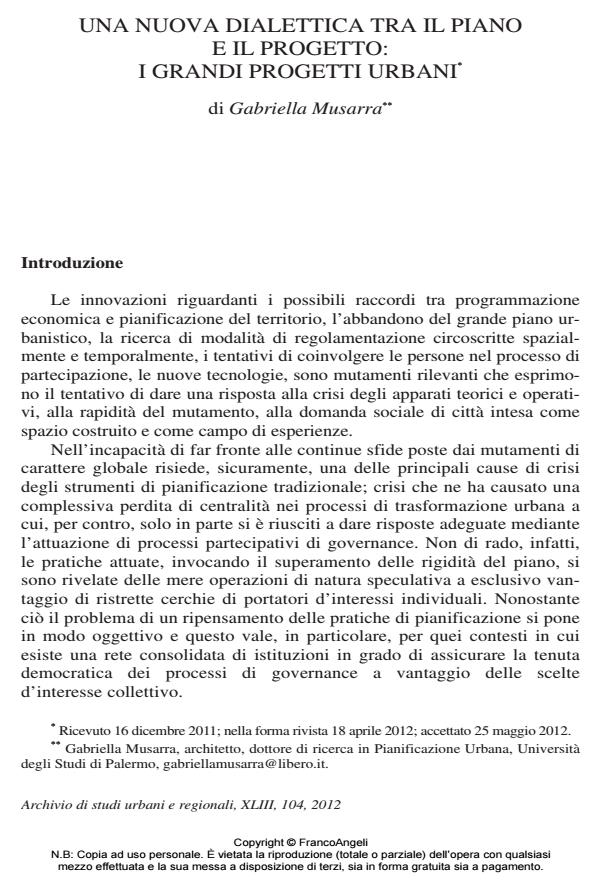A New Dialectic between the Plan and the Project: The Great Urban Projects
Journal title ARCHIVIO DI STUDI URBANI E REGIONALI
Author/s Gabriella Musarra
Publishing Year 2012 Issue 2012/104
Language Italian Pages 23 P. 51-73 File size 131 KB
DOI 10.3280/ASUR2012-104004
DOI is like a bar code for intellectual property: to have more infomation
click here
Below, you can see the article first page
If you want to buy this article in PDF format, you can do it, following the instructions to buy download credits

FrancoAngeli is member of Publishers International Linking Association, Inc (PILA), a not-for-profit association which run the CrossRef service enabling links to and from online scholarly content.
In answer to the changes in the city systems and to the modifications of the society, in the years ’90 it has been possibile to record change of the city policies: to the problem of life qualities of the city, to the infrastructural and services lack, the administrations must face new problema that go from the transformation of the economic structure of the cities, to the participation of new economic operators and to the location of new economic resources for the transformation of the city. The regeneration is born, therefore, not only like action of recovery and improvement of the existing, but also and above all like process of innovation of the participation techniques, of the planning modalities, of the policies, of the forms of cooperation and involvement of the social forces. In the strategies adopted from the cities in order to improve the competitive positioning, important is the role of the "Great Project" in the elaboration of new programs of urban planning and economic regeneration. The city plan, so intended, is not a urbanistic plan, neither an architectonic plan. It is a pragmatic instrument that invest the planning instruments and that it is adapted to the degrees of certainty or uncertainty of the context.
Keywords: Regeneration, negotiation, new tools of government, creative city.
Gabriella Musarra, Una nuova dialettica tra il piano e il progetto: i grandi progetti urbani in "ARCHIVIO DI STUDI URBANI E REGIONALI" 104/2012, pp 51-73, DOI: 10.3280/ASUR2012-104004